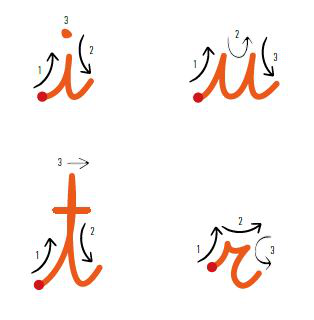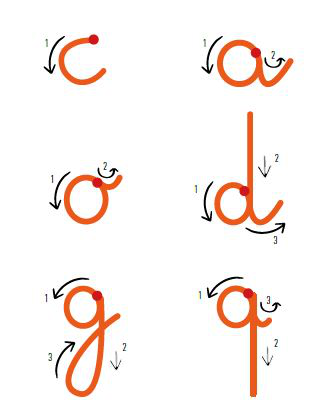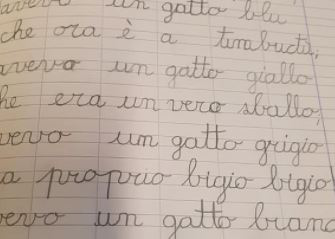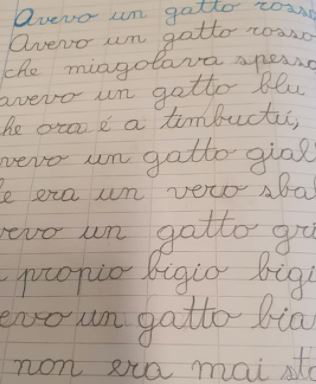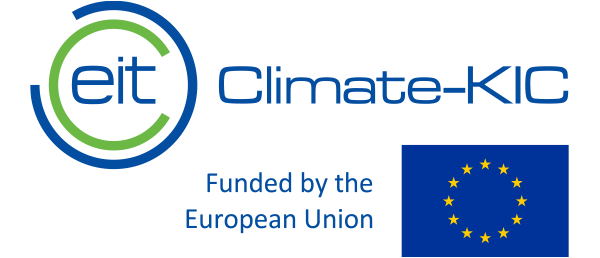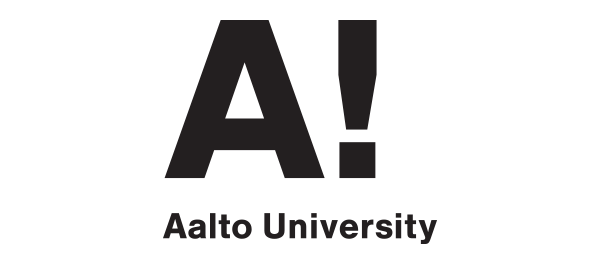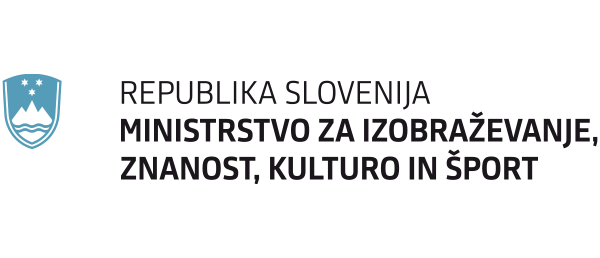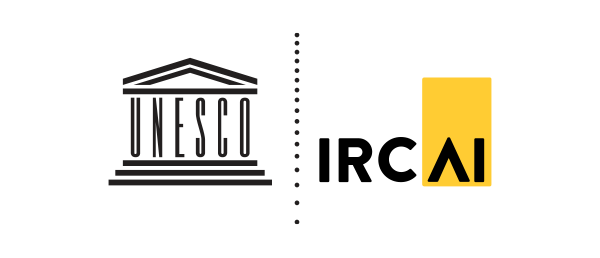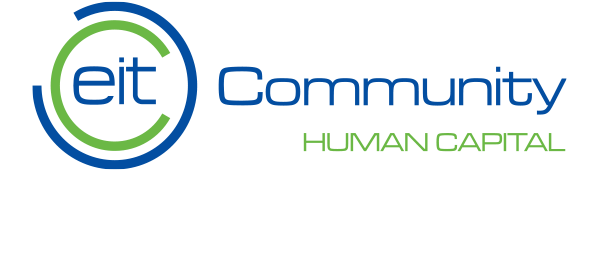
The importance of visual memory in learning cursive
Handwriting is a complex and not spontaneous activity. The visuo-perceptive ability in the learning of letters is an important part in such an educational process. Poor letter memorization and incorrect motor programming can negatively affect the handwriting learning process

Team: Michela Vandelli
Team members
Michela VandelliMembers roles and background
Expert in learning processes and Tutor, I recover the basic skills of children, I deal with learning difficulties and ASD (Specific Learning Disorders) and I teach the study method. Student of SFP (Primary Education Sciences) at the University of Modena and Reggio Emilia
Contact details
Solution description
The letters in italics, perceptively more complex than those in capital letters need, to be correctly acquired by children, an adequate approach that starts from general graph motor skills and from a correct learning through the use of the senses and the body. To this end, it is possible already in the final years of kindergarten to build projects and activities that include the development and enhancement of elements directly related to the learning of writing such as the general motor skills of the body, balance and lateralization, with specific elements that follow the logic of the distal next law, for which motor coordination develops starting from the center of the body and proceeds towards the extremes up to the fingers of the hands. The visuo-perceptive element, although it can already be enhanced previously through the use of basic movements preparatory to the graphic layout, with tools related to drawing and the recognition and search for forms appropriate to the age of the children, concerns more the pupils of the first primary class, when they approach the letters for the first time. To support the memorization of letters and perceptive skills that are part of a correct learningof writing and motor programming,it could be useful to support visuo-perceptive learning, through the use of "Leap Motion" that is a technology that allows you to trace in the void with your own hands, a letter and see it reproduced on a screen. This type of activity actsto the motor memory by imprinting the movement that is being performed in the brain structures responsible for this and at the same time activating the visual component by training children in the visual recognition of the letters, with the advantage that lightens the task by missing the graphic tool element to be managed. This could be thought of as a laboratory and as a strengthening activity and could take place alternately with all those multisensory elements of manual letter tracing: tracing with the body on the floor, construction by moldable paste and training through the basic movements of the letters
Solution context
The activity thus conceived should reduce over time and experience the difficulties of memorization and visual perceptive recognition of letters in italics and should also facilitate the correct motor programming in the construction of individual letters. In fact, it is known that a bad motor acquisition affects the correctness of the graphic layout, risking to compromise it totally. It is also known that motor programming is connected directly to the motor cortex thus fixing in the memory a correct evocation of the right movement to be performed. Tracing letters in the air with your hands and seeing their construction on the screen should facilitate both the motor acquisition of the gesture and the visual acquisition of the traced letter, thus training the child to a correct learning. Finally, the perceptive training of the letters could also facilitate the other learning areas related to visuo-perceptive and spatial skills, thus favoring theiracquisition
Solution target group
The reference group of the project is designed for children of the first class of primary school and children of the second class, for pupils between 6 and 8 years. The activity is designed in a small group laboratory environment by reference class and age. It could be identified within the weekly school timetable some hours to be dedicated exclusively to learning handwriting with all the uses of the multisensory methodologies described above. In rotation, children could access the perceptive training with "Leap Motion" methodology by treating each time the letters learned in class to go to enhance and fix the correct movement to be performed and visual memorization.
Solution impact
The impact of this methodology should be to minimize children's graphic and graph motor difficulties and facilitate perceptive skills in the recognition of letters in italics that can sometimes also be related to the visual complexity typical of the font. Expanding this methodology then to the complexities of union between the different letters that go to build a whole word, I expect to see the construction by the children of a technically correct track, that is, free from motor distortions and improbable programming that make writing difficult to read and excessively tiring for the students. I also expect to find greater perceptual and spatial ability. The possible measurement of the acquired learning could be verified through the administration at a distance of time of the TPV test (visual perception test) able to verify the improvements in perceptual visuo skills and subsequently through BKK tests to verify the quality of the graphic trace. The second type of verification should be administered at the beginning of the writing learning path, to probe the incoming graph motor skills and thus be able to compare them after the end of the entire acquisition process.
Solution tweet text
The perceptual visuo skills facilitate the acquisition and memorization of letters and the possibility of tracing them by imagining the movement to be performed facilitates the acquisition of the correct motor programming, allowing their evocation imprinted in the motor cortex.Solution innovativeness
The activity proposed in the project is a methodology that can be considered innovative since normally the teaching of writing and in particular of cursive is conducted by the teacher as a mere copy of an image in terms of graphic sign on the sheet. This type of teaching can give space to different difficulties leading the child to copy what the adult proposes passively and with the mature resources he possesses. Motor, visuo perceptive and cognitive resources that are certainly not comparable to those that an adult can possess. When the first experience of approach to writing leads to the automation of inadequate movements, it can happen very often that the graphic layout that I collectwill reproduce the incorrect automatisms learned, also determining writing difficulties that could be avoided immediately. Learning through the senses, on the other hand, stimulates the memory of the motor cortex, favoring the correct learning of the letters and their natural motor programming, and allows to fix the correct automatisms. This also happens for our embodied cognition, that is, of a species that builds neuronal circuits through the use of hands. Maria Montessori argued that:"... the hand is the expressive instrument of human intelligence: it is the organ of the mind... The hand is the means that has made it possible for human intelligence to express itself and for civilization to continue in its work. In early childhood the hand helps the development of intelligence and in mature man it is the instrument that controls the destiny of theearth". Vygotskij argued that there is a relationship in the relationship between instruments and man's action; there are tools that we learn to use, which modify matter and tools that modify thought. The pen is an instrument that modifies thought and that together with language contributes to building higher thinking skills, becoming the ability to express thought itself.
Solution transferability
The project described here is easily transferable to other educational contexts that always concern the development of children's cognitive skills in the field of reading-writing. Visuo-perceptive skills are also directly related to reading skills and to some extent are related to any difficulties in learning reading itself. There are in fact different degrees of difficulty in the acquisition ofthisability that to a large extent can be superatand and someand compensatedand, and there are also different types ofdifficulties included in those codified as "dyslexiaand evolutionaryand" (DSA) Of these types has been hypothesized a visual dyslexia, that is, directly linked to the visuo-perceptive abilities in the recognition of shapes and letters. The enhancement of these visual skills, therefore, can be easily proposed also to facilitate the development of deficient skills that could makethe process ofacquiring reading difficult, thus enhancing any areas of difficulty present. Also when we talk about visual dyslexia we must consider that very often there is a difficulty of manual eye coordination, where theeye that presents un coordinated saccadic movements, sends incorrect messages to the cerebral cortex. This difficulty can possibly beprevented and limited precisely through the use of the body, senses and hands by approaching the graphic layout of italics. Handwriting is in fact directly connected to the skills of oculo-manual coordination.
Solution sustainability
The activity proposed here is sustainable to the extentthat one begins to be awarethat learning difficulties can be modified and limited through specific enhancement paths dedicated to the problems that emerge. Within the Italian school system, unfortunately, this awareness is still very marginal, there is a tendency more than anything else to diagnose those children who present some difficulties instead of designing prevention paths. My idea from this point of view would be easily sustainable even within the school, going to design exclusive moments dedicated to learning writing in italics and laboratory moments even in rotation. The "Leap motion" technology, however, does not require particular innovative tools or difficult to access since it can simply be connected to the computer via USB port being in fact a real controller and can be attached to any PC. Working then in the classrooms, providing for the rotation among the children, would not even require the presence of a real computer laboratory, a few computers that are already very often supplied to schools would be enough. It would therefore become easily sustainable even in the long term.
Solution team work
I don't have any team mates, because I did the project by myself
Links
- The role of sensorimotor learning in the perception of letter-like forms
- The Effects of Manuscript, Cursive or Manuscript/Cursive Styles on Writing Development in Grade 2
- The effects of handwriting experience on functional brain development in pre-literate children
- The Contribution of Handwriting and Spelling Remediation to Overcoming Dyslexia
* Climate-KIC publishes the proposed solutions developed during the DigiEduHack event solely for the purposes of facilitating public access to the information concerning ideas and shall not be liable regarding any intellectual property or other rights that might be claimed to pertain to the implementation or use any of the proposed solutions shared on its website neither does it represent that it has made any effort to identify any such rights. Climate-KIC cannot guarantee that the text of the proposed solution is an exact reproduction of the proposed solution. This database is general in character and where you want to use and develop a proposed solution further, this is permitted provided that you acknowledge the source and the team which worked on the solution by using the team’s name indicated on the website.



